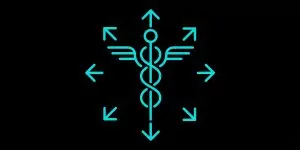Blue Cross Blue Shield of Massachusetts is one of the largest health insurance providers in the state of Massachusetts. In the Enterprise Technology Organization, we run mission-critical applications 24 hours a day, 365 days a year and process extremely large transaction volumes related to healthcare claims and enrollment.
To put this in perspective, we processed 94 million eligibility requests alone last year.
Modernizing mission-critical and enterprise systems
To support millions of monthly transactions, we are using systems built in 2010 on a traditional, multi-tiered technology stack with application server technology.
While this infrastructure has served us well, our market share has increased in a way that it has become harder to preserve our systems’ availability when there’s an issue. For this reason, we began looking for a modern, cloud-based technology platform that could provide greater flexibility in handling transaction volume spikes. We wanted to pilot new technologies to understand what the process would be like to move a component of our systems to a new technology platform.
We reached out to IBM because they’ve been a strategic partner and we have a significant investment in IBM technologies. The sales team connected us with the IBM Garage to help us with this technology innovation process.
The IBM Garage team told us that we could work together to create a minimum viable product (MVP), which would, surprisingly, only take four weeks. We also asked about a future platform and what the roadmap would be for our existing IBM technologies. IBM Garage experts in mission-critical and enterprise systems quickly understood the large amount of complex code supporting our systems and the state of our systems technologically and architecturally, thus we began exploring cloud computing platforms, specifically IBM cloud offerings.
Cloud innovation with microservices and containerization
After evaluating technology for modernizing mission-critical electronic data interchange (EDI) applications, we were most interested in an on-premises cloud platform for both business and technology reasons. This cloud innovation option would provide more scalability, a strategic architectural direction, and the opportunity to preserve our technology investment with minimal code rewriting.
We chose to test our mission-critical apps on IBM Cloud Pak for Applications software running on the Red Hat OpenShift container platform because this scalable, containerized infrastructure helps us take advantage of new technologies while retaining our investment in IBM technology and architecturally evolving it.
Now, this wasn’t really a “lift and shift.” It was more of a strategic architecture with calculated changes to our technology platform and code. Our strategic goal was to get to a new cloud-based container platform in both the shortest time and smallest cost investment possible.
The IBM Garage team members have been instrumental in educating us on rapid application modernization and empowering our infrastructure, development and architectural groups. The IBM Garage Method was essential to facilitating knowledge transfer.
As part of the method, they taught us an agile technique called pair programming, where developers work in pairs and one developer writes code while the other simultaneously reviews it. Our developers, system administrators and infrastructure experts paired with the corresponding IBM Garage experts.
Pairing and rotating meant that everyone was hands-on with every component; there were no silos because we all knew what was involved in the migration of the services selected. We made fast progress because the learning curve diminished. From an infrastructure perspective, pairing allowed us to get everything done in short order and quickly resolve any roadblocks.
The IBM Garage team members literally and figuratively worked side-by-side with us; we were impressed with their collaboration and dedication.
Cultural transformation through cloud technology
We were amazed that in four weeks, we had a complete demonstration of the new system in the development environment and could even monitor performance and check that it was meeting our service level agreement.
In addition to the cultural shift – learning new ways to work – the biggest takeaway is the technology itself. The world is moving to cloud technologies and now, so are we.
With a modernized infrastructure that includes containerization, we have superior monitoring at the container level and can terminate unnecessary containers. Updated integrations enable us to automate deploys in a more robust fashion, without as much manual intervention. Automation gives us time to proactively refine systems that couldn’t get the same attention in the past, when we were too busy troubleshooting and reacting.
As a customer-focused company, modernized systems allow us to provide the best service we can. Our technology can scale to meet customer demand around the clock without downtime.
We look forward to further collaboration with the IBM Garage team since we have ambitious plans to fully transition to the modernized platform by the end of 2020. The eligibility and benefits piece that we worked on with the IBM Garage will go into production, but that is only about 15 percent of our overall system.
We plan to use both the technical knowledge and agile development approach that we’ve learned from the IBM Garage team to modernize the rest of our applications on the Red Hat OpenShift container platform running IBM Cloud Pak for Applications software. This MVP through the IBM Garage was a truly transformative process.
Want to experience the IBM Garage for your business? Schedule a no-charge visit with the IBM Garage to get started.
The post Modernization and cloud innovation lead to cultural shift at Blue Cross Blue Shield of Massachusetts appeared first on Cloud computing news.
Quelle: Thoughts on Cloud

Published by